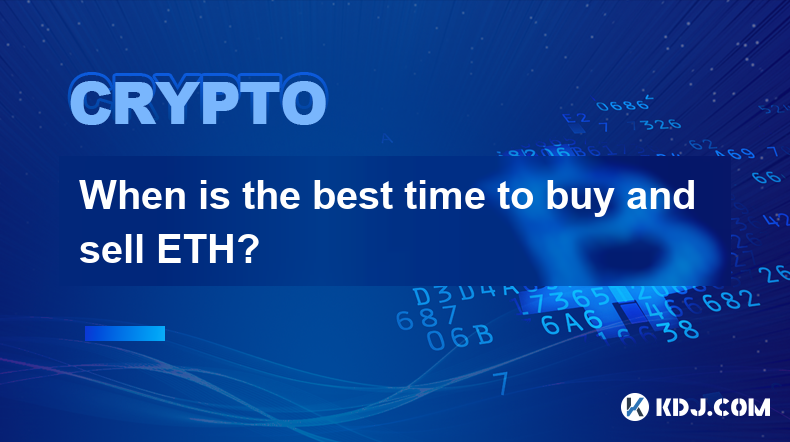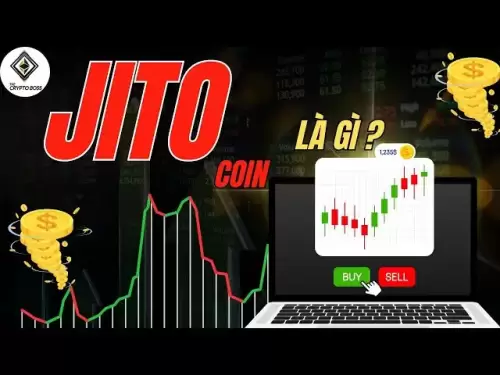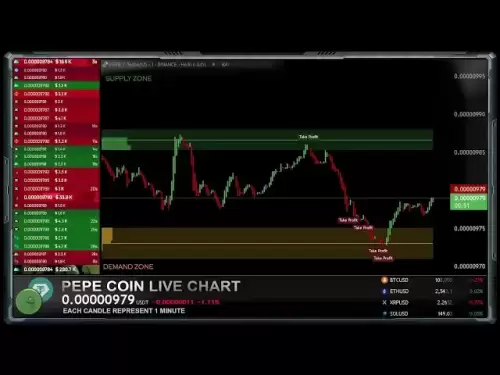-
 Bitcoin
Bitcoin $107,810.8710
-1.45% -
 Ethereum
Ethereum $2,531.4386
-1.75% -
 Tether USDt
Tether USDt $1.0000
-0.03% -
 XRP
XRP $2.2542
-0.99% -
 BNB
BNB $659.1350
-0.50% -
 Solana
Solana $148.5456
-2.40% -
 USDC
USDC $0.9999
-0.02% -
 TRON
TRON $0.2868
-0.44% -
 Dogecoin
Dogecoin $0.1666
-3.65% -
 Cardano
Cardano $0.5751
-2.36% -
 Hyperliquid
Hyperliquid $37.6845
-5.51% -
 Bitcoin Cash
Bitcoin Cash $494.9448
-0.65% -
 Sui
Sui $2.8396
-3.31% -
 Chainlink
Chainlink $13.2423
-2.59% -
 UNUS SED LEO
UNUS SED LEO $9.0482
0.02% -
 Stellar
Stellar $0.2467
-2.44% -
 Avalanche
Avalanche $17.8165
-3.63% -
 Shiba Inu
Shiba Inu $0.0...01158
-2.41% -
 Toncoin
Toncoin $2.7397
-3.42% -
 Hedera
Hedera $0.1560
-2.73% -
 Litecoin
Litecoin $85.8559
-2.34% -
 Monero
Monero $315.3710
-2.30% -
 Dai
Dai $1.0001
0.00% -
 Polkadot
Polkadot $3.3443
-2.03% -
 Ethena USDe
Ethena USDe $1.0001
0.01% -
 Bitget Token
Bitget Token $4.2888
-3.73% -
 Uniswap
Uniswap $7.3388
-1.57% -
 Aave
Aave $278.2986
-3.05% -
 Pepe
Pepe $0.0...09807
-3.67% -
 Pi
Pi $0.4563
-2.39%
When is the best time to buy and sell ETH?
To determine the best times to buy and sell ETH, analyze market cycles, technical indicators, news events, and consider using strategies like day trading or dollar-cost averaging.
Apr 18, 2025 at 08:56 am

When considering the best time to buy and sell Ethereum (ETH), it is essential to understand the various factors that influence its price. The crypto market's volatility means that timing your trades can be challenging, but by analyzing market trends, news events, and technical indicators, you can make more informed decisions. This article will explore different strategies and insights to help you determine the optimal times for buying and selling ETH.
Understanding Market Cycles
To identify the best times to buy and sell ETH, it is crucial to understand the market cycles. The crypto market typically goes through four stages: accumulation, markup, distribution, and markdown. During the accumulation phase, prices are generally low, and savvy investors start buying. As the market enters the markup phase, prices begin to rise, and more traders enter the market. The distribution phase is characterized by selling from early investors, and prices may start to plateau or decline. Finally, during the markdown phase, prices drop significantly as the market corrects itself.
By recognizing these cycles, you can aim to buy during the accumulation phase and sell during the markup or early distribution phase. However, predicting the exact start and end of each cycle is difficult and requires careful analysis of market indicators.
Analyzing Technical Indicators
Technical analysis can provide valuable insights into the best times to buy and sell ETH. Some commonly used indicators include moving averages, the Relative Strength Index (RSI), and the Moving Average Convergence Divergence (MACD). Moving averages help smooth out price data to identify trends. For instance, when the short-term moving average crosses above the long-term moving average, it may signal a good time to buy, indicating an upward trend.
The RSI measures the speed and change of price movements, with values ranging from 0 to 100. An RSI below 30 suggests that ETH is oversold and might be a good time to buy, while an RSI above 70 indicates it is overbought and might be a good time to sell. The MACD is another momentum indicator that can help you identify potential buy and sell signals. When the MACD line crosses above the signal line, it may indicate a good time to buy, and when it crosses below, it may suggest a good time to sell.
Monitoring News and Events
News and events play a significant role in the price movements of ETH. Staying informed about regulatory changes, technological advancements, and market sentiment can help you time your trades more effectively. For instance, positive news about Ethereum's upgrades or partnerships can lead to price increases, making it a good time to sell. Conversely, negative news, such as regulatory crackdowns or security breaches, can cause prices to drop, presenting a buying opportunity.
To stay updated, consider following reputable crypto news sources, joining online communities, and setting up alerts for important events. By combining this information with technical analysis, you can make more informed decisions about when to buy and sell ETH.
Using Trading Strategies
Various trading strategies can help you determine the best times to buy and sell ETH. Some popular strategies include day trading, swing trading, and dollar-cost averaging. Day trading involves buying and selling ETH within the same day, taking advantage of short-term price fluctuations. This strategy requires constant monitoring of the market and a good understanding of technical indicators.
Swing trading, on the other hand, involves holding ETH for a few days to weeks, aiming to profit from medium-term price movements. This strategy requires less time commitment than day trading but still necessitates a solid grasp of market trends and technical analysis.
Dollar-cost averaging is a more passive strategy that involves investing a fixed amount of money into ETH at regular intervals, regardless of the price. This approach can help mitigate the impact of volatility and reduce the risk of buying at a peak price. By spreading out your investments over time, you can potentially buy ETH at lower average prices.
Utilizing Trading Platforms and Tools
To execute your buy and sell decisions effectively, it is important to use reliable trading platforms and tools. Some popular platforms for trading ETH include Coinbase, Binance, and Kraken. These platforms offer various features such as real-time price charts, order books, and trading indicators that can help you make informed decisions.
In addition to trading platforms, consider using trading bots and automated trading software to execute your strategies. These tools can help you buy and sell ETH based on predefined criteria, reducing the need for constant market monitoring. However, it is important to thoroughly research and test any trading bot or software before using it with real money.
When using trading platforms, follow these steps to buy and sell ETH:
- Log into your chosen trading platform.
- Navigate to the ETH trading page.
- Select the type of order you want to place, such as a market order or limit order.
- Enter the amount of ETH you want to buy or sell.
- Review your order details and confirm the transaction.
- Monitor your trades and adjust your strategy as needed.
Considering Long-Term vs. Short-Term Investing
Your investment horizon can also influence the best times to buy and sell ETH. Long-term investors typically aim to hold ETH for several months or years, while short-term traders focus on shorter timeframes. Long-term investors may buy during market dips and hold through volatility, expecting prices to rise over time. This approach requires patience and a strong belief in Ethereum's long-term potential.
Short-term traders, on the other hand, aim to capitalize on price fluctuations within days or weeks. They may use technical analysis and trading strategies to identify entry and exit points. This approach can be more profitable in the short term but also carries higher risk due to the crypto market's volatility.
Frequently Asked Questions
Q: How can I minimize the risk when buying and selling ETH?
A: To minimize risk, consider diversifying your investments, using stop-loss orders to limit potential losses, and only investing money you can afford to lose. Additionally, staying informed about market trends and using a combination of technical analysis and fundamental analysis can help you make more informed decisions.
Q: Is it better to buy ETH during a bull market or a bear market?
A: Buying ETH during a bear market can be advantageous as prices are generally lower, offering potential for higher returns when the market recovers. However, it also carries higher risk due to the uncertainty of when the market will rebound. Buying during a bull market may offer more immediate gains but at higher prices, potentially reducing your long-term returns.
Q: Can I use leverage when trading ETH, and what are the risks?
A: Yes, many trading platforms offer leverage, allowing you to borrow funds to increase your trading position. While leverage can amplify your profits, it also increases your potential losses. It is important to understand the risks involved and use leverage cautiously, only with funds you can afford to lose.
Q: How important is it to set a stop-loss order when trading ETH?
A: Setting a stop-loss order is crucial when trading ETH as it helps limit your potential losses. By setting a stop-loss, you can automatically sell your ETH if the price drops to a certain level, protecting your investment from significant downturns. Always consider using stop-loss orders as part of your trading strategy.
Disclaimer:info@kdj.com
The information provided is not trading advice. kdj.com does not assume any responsibility for any investments made based on the information provided in this article. Cryptocurrencies are highly volatile and it is highly recommended that you invest with caution after thorough research!
If you believe that the content used on this website infringes your copyright, please contact us immediately (info@kdj.com) and we will delete it promptly.
- Pump.fun's PUMP Token and Gate.io: A $4 Billion Meme Coin Gamble?
- 2025-07-08 16:30:12
- DigitalX, BTC Holdings, Funding Secured: Aussie Crypto Firm Goes Big on Bitcoin
- 2025-07-08 17:10:12
- Acquire.Fi: Navigating the Web3 M&A Landscape as a Consultant
- 2025-07-08 16:30:12
- Chainlink (LINK) Price Analysis: Navigating Uncertainty with Analysts' Insights
- 2025-07-08 16:50:12
- Rare 50p Coins Spark Bidding Wars: Are You Sitting on a Goldmine?
- 2025-07-08 16:50:12
- Iron Maiden's 50th Anniversary Gets Royal Treatment with Limited Edition Coin
- 2025-07-08 16:55:12
Related knowledge

How to customize USDT TRC20 mining fees? Flexible adjustment tutorial
Jun 13,2025 at 01:42am
Understanding USDT TRC20 Mining FeesMining fees on the TRON (TRC20) network are essential for processing transactions. Unlike Bitcoin or Ethereum, where miners directly validate transactions, TRON uses a delegated proof-of-stake (DPoS) mechanism. However, users still need to pay bandwidth and energy fees, which are collectively referred to as 'mining fe...

USDT TRC20 transaction is stuck? Solution summary
Jun 14,2025 at 11:15pm
Understanding USDT TRC20 TransactionsWhen users mention that a USDT TRC20 transaction is stuck, they typically refer to a situation where the transfer of Tether (USDT) on the TRON blockchain has not been confirmed for an extended period. This issue may arise due to various reasons such as network congestion, insufficient transaction fees, or wallet-rela...

How to cancel USDT TRC20 unconfirmed transactions? Operation guide
Jun 13,2025 at 11:01pm
Understanding USDT TRC20 Unconfirmed TransactionsWhen dealing with USDT TRC20 transactions, it’s crucial to understand what an unconfirmed transaction means. An unconfirmed transaction is one that has been broadcasted to the blockchain network but hasn’t yet been included in a block. This typically occurs due to low transaction fees or network congestio...

How to check USDT TRC20 balance? Introduction to multiple query methods
Jun 21,2025 at 02:42am
Understanding USDT TRC20 and Its ImportanceUSDT (Tether) is one of the most widely used stablecoins in the cryptocurrency market. It exists on multiple blockchain networks, including TRC20, which operates on the Tron (TRX) network. Checking your USDT TRC20 balance accurately is crucial for users who hold or transact with this asset. Whether you're sendi...

What to do if USDT TRC20 transfers are congested? Speed up trading skills
Jun 13,2025 at 09:56am
Understanding USDT TRC20 Transfer CongestionWhen transferring USDT TRC20, users may occasionally experience delays or congestion. This typically occurs due to network overload on the TRON blockchain, which hosts the TRC20 version of Tether. Unlike the ERC20 variant (which runs on Ethereum), TRC20 transactions are generally faster and cheaper, but during...

The relationship between USDT TRC20 and TRON chain: technical background analysis
Jun 12,2025 at 01:28pm
What is USDT TRC20?USDT TRC20 refers to the Tether (USDT) token issued on the TRON blockchain using the TRC-20 standard. Unlike the more commonly known ERC-20 version of USDT (which runs on Ethereum), the TRC-20 variant leverages the TRON network's infrastructure for faster and cheaper transactions. The emergence of this version came as part of Tether’s...

How to customize USDT TRC20 mining fees? Flexible adjustment tutorial
Jun 13,2025 at 01:42am
Understanding USDT TRC20 Mining FeesMining fees on the TRON (TRC20) network are essential for processing transactions. Unlike Bitcoin or Ethereum, where miners directly validate transactions, TRON uses a delegated proof-of-stake (DPoS) mechanism. However, users still need to pay bandwidth and energy fees, which are collectively referred to as 'mining fe...

USDT TRC20 transaction is stuck? Solution summary
Jun 14,2025 at 11:15pm
Understanding USDT TRC20 TransactionsWhen users mention that a USDT TRC20 transaction is stuck, they typically refer to a situation where the transfer of Tether (USDT) on the TRON blockchain has not been confirmed for an extended period. This issue may arise due to various reasons such as network congestion, insufficient transaction fees, or wallet-rela...

How to cancel USDT TRC20 unconfirmed transactions? Operation guide
Jun 13,2025 at 11:01pm
Understanding USDT TRC20 Unconfirmed TransactionsWhen dealing with USDT TRC20 transactions, it’s crucial to understand what an unconfirmed transaction means. An unconfirmed transaction is one that has been broadcasted to the blockchain network but hasn’t yet been included in a block. This typically occurs due to low transaction fees or network congestio...

How to check USDT TRC20 balance? Introduction to multiple query methods
Jun 21,2025 at 02:42am
Understanding USDT TRC20 and Its ImportanceUSDT (Tether) is one of the most widely used stablecoins in the cryptocurrency market. It exists on multiple blockchain networks, including TRC20, which operates on the Tron (TRX) network. Checking your USDT TRC20 balance accurately is crucial for users who hold or transact with this asset. Whether you're sendi...

What to do if USDT TRC20 transfers are congested? Speed up trading skills
Jun 13,2025 at 09:56am
Understanding USDT TRC20 Transfer CongestionWhen transferring USDT TRC20, users may occasionally experience delays or congestion. This typically occurs due to network overload on the TRON blockchain, which hosts the TRC20 version of Tether. Unlike the ERC20 variant (which runs on Ethereum), TRC20 transactions are generally faster and cheaper, but during...

The relationship between USDT TRC20 and TRON chain: technical background analysis
Jun 12,2025 at 01:28pm
What is USDT TRC20?USDT TRC20 refers to the Tether (USDT) token issued on the TRON blockchain using the TRC-20 standard. Unlike the more commonly known ERC-20 version of USDT (which runs on Ethereum), the TRC-20 variant leverages the TRON network's infrastructure for faster and cheaper transactions. The emergence of this version came as part of Tether’s...
See all articles

























































































